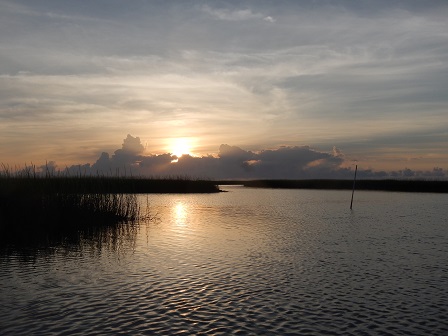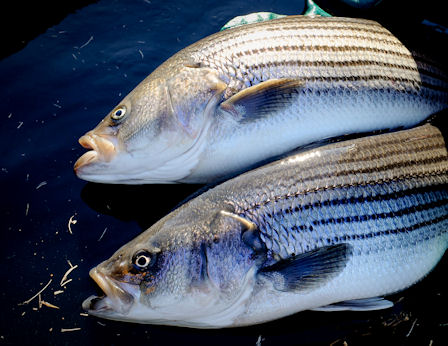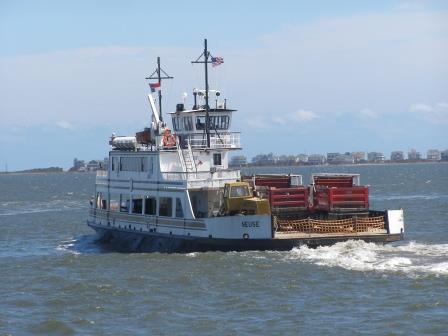Coastal Ocean Observing: Real-Time Data Available To Students

When earth science students at Wakefield High School want to track rainfall on the Cape Fear River, they go online to: www.cormp.org.
Through the Coastal Ocean Research and Monitoring Program (CORMP), students also determine the wind speed, air temperature and air pressure at various locations in the Atlantic Ocean around Wilmington.
Based at the University of North Carolina Wilmington, CORMP provides oceanographic data in near-real time and information on weather conditions, as well as living marine resources. Data from buoys also provide valuable tools for the National Weather Service in making rip current forecasts.
“My students have used the CORMP Web site when doing units on a variety of weather phenomena and in studying physical oceanography and watershed ecology,” explains Kirsten Oshinsky, science teacher at Wakefield High School in Wake County. “Kids like it because it makes weather more real.”
And in fall 2008, CORMP data will become part of a teaching component for at-risk students. “We are starting a new academy at Wakefield High School,” Oshinsky says. “We will take students at-risk and integrate CORMP data into science, math and technology.”
CORMP — which provides marine forecasts for fishers, boaters and others — has resources for different grade levels.
“We reach across different disciplines and aren’t just science-based,” says Jennifer Dorton, CORMP outreach and education specialist.
For a business class, students can design a company’s marketing campaign based on an environmental theme. For an English lesson, they can write a short poem about a natural feature of the Earth. And for a chemistry class, students can record data and the changing parameters of a fish tank over several weeks.
CORMP is just one of several regional and national coastal ocean observing systems that students are using across the state with data available from buoys and meteorological instruments, autonomous underwater vehicles and cabled seafloor observatories.
The online products bring cutting-edge research and technology into the classroom.
“Instead of textbooks, students are using real-time data to learn about different concepts,” says Chris Petrone, marine education specialist with Virginia Sea Grant and data and outreach coordinator for the Bridge Sea Grant Ocean Sciences Education Center.
For example, when learning about heat capacity, students can see the difference between air and water temperature, Petrone adds. “Air temperature can fluctuate drastically over 24 hours, but water temperature typically does not change much at all.”
INTEGRATED NETWORK
In 2004, the U.S. Commission on Ocean Policy completed a report that recommended students learn real-time information about ocean conditions.
President George Bush responded with the U.S. Ocean Action Plan and subsequent legislation that set up the Integrated Ocean Observing System, known as IOOS, primarily funded through the National Ocean and Atmospheric Administration. The system includes a network of buoys, ships, satellites, underwater vehicles and other platforms that supply data and information for ocean predictions in U.S. waters.
The network includes CORMP and the Southeast Atlantic Coastal Ocean Observing System (SEACOOS), which knits together small monitoring programs already operating along the coast. SEACOOS is a collaborative effort among the University of North Carolina at Chapel Hill, North Carolina Sea Grant, the University of North Carolina system and numerous other partners in South Carolina, Georgia and Florida.
Formed in 2002, SEACOOS tracks data through observation systems. To reach out to educators, SEACOOS developed a number of online resources, including a series of virtual classrooms and a “Fish Match” game.
“Using real-world examples from math or physics brings science to life and helps attract and nurture the next generation of ocean scientists,” says Jack Thigpen, North Carolina Sea Grant extension director who served on the SEACOOS team.
The program also produced posters on waves and hurricanes for teachers to use in their classrooms.
“Through the Center for Ocean Sciences Education Excellence SouthEast (COSEE-SE) and other partners, SEACOOS has distributed thousands of posters to teachers across the country,” says Harvey Seim, SEACOOS project coordinator and physical oceanographer at UNC-CH. “As a result, the education component of the SEACOOS Web site now receives thousands of hits per day.”
Educators also access storm modeling through another system. A partnership among the University of South Carolina, North Carolina State University and the University of North Carolina at Wilmington, the Carolinas Coastal Ocean Observing and Prediction System (Caro-COOPS) provides storm-surge modeling based on real-time monitoring of hydrologic and meteorological conditions.
“We have provided hundreds of scenarios for flooding in North and South Carolina — Hilton Head to Wrightsville Beach,” says Len Pietrafesa, a Caro-COOPS principal investigator and associate dean for external affairs for North Carolina State University’s College of Physical and Mathematical Sciences. The network also has provided mathematical modeling for storms in the Albemarle and Pamlico sounds.
Caro-COOPS provides predictions while a storm is occurring. While Hurricane Katrina was moving toward the Gulf Coast in 2005, the network made forecasts.
“We predicted where the flooding would be, but didn’t include levees breaking in New Orleans,” Pietrafesa explains. The information was available to local emergency managers.
TRAINING TEACHERS
North Carolina educators can enroll in a number of oceanography training programs.
Through the American Meteorological Society’s (AMS) Maury Project, facilitators are bringing new lessons on a variety of ocean topics to teachers in K-12, as well as to aquarium and museum educators. The initiative also promotes minority participation in science.
North Carolina Sea Grant marine education specialist, Terri Kirby Hathaway, conducts peer training throughout the state.
“Each of the eight Maury Project lessons focuses on a single oceanographic topic, such as ocean tides, wind-driven surface currents and shallow-water waves,” Hathaway says. “This format allows educators to learn one subject in depth so then they can interpret real-time data from ocean observing systems.”
Hathaway also teaches an AMS DataStreme Atmosphere graduate course to teachers. In the 13-week course, participants focus on the atmospheric marine environment through the use of online weather data and learning materials, along with study guide readings and investigations.
Classroom teachers of any grade level can apply as well as informal educators who have an interest in promoting the teaching of weather and ocean literacy across the curriculum. Participants receive three semester hours of graduate credit free of charge.
After taking the course, a teacher can serve as the school’s weather education resource person.
“With the national push towards an ocean literate citizenry, having educators well-versed in the ocean sciences is critical,” Hathaway says. “We need to get students excited about the ocean, and a teacher’s enthusiasm is usually transferred to their students.”
Because of advances in technology and the increased use of Web cams, there will be more opportunities for students to engage in weather projects.
“Having real-time data available for teachers to use in their classrooms makes studying the ocean more relevant to students and modernizes the way ocean sciences are taught,” Hathaway adds.
“Seeing real-time measurements might just be the hook to encourage today’s students to be tomorrow’s scientists, ocean engineers or remotely operated vehicle pilots. The possibilities are endless — and very exciting.”
This article was published in the Spring 2008 issue of Coastwatch.
For contact information and reprint requests, visit ncseagrant.ncsu.edu/coastwatch/contact/.
- Categories:


